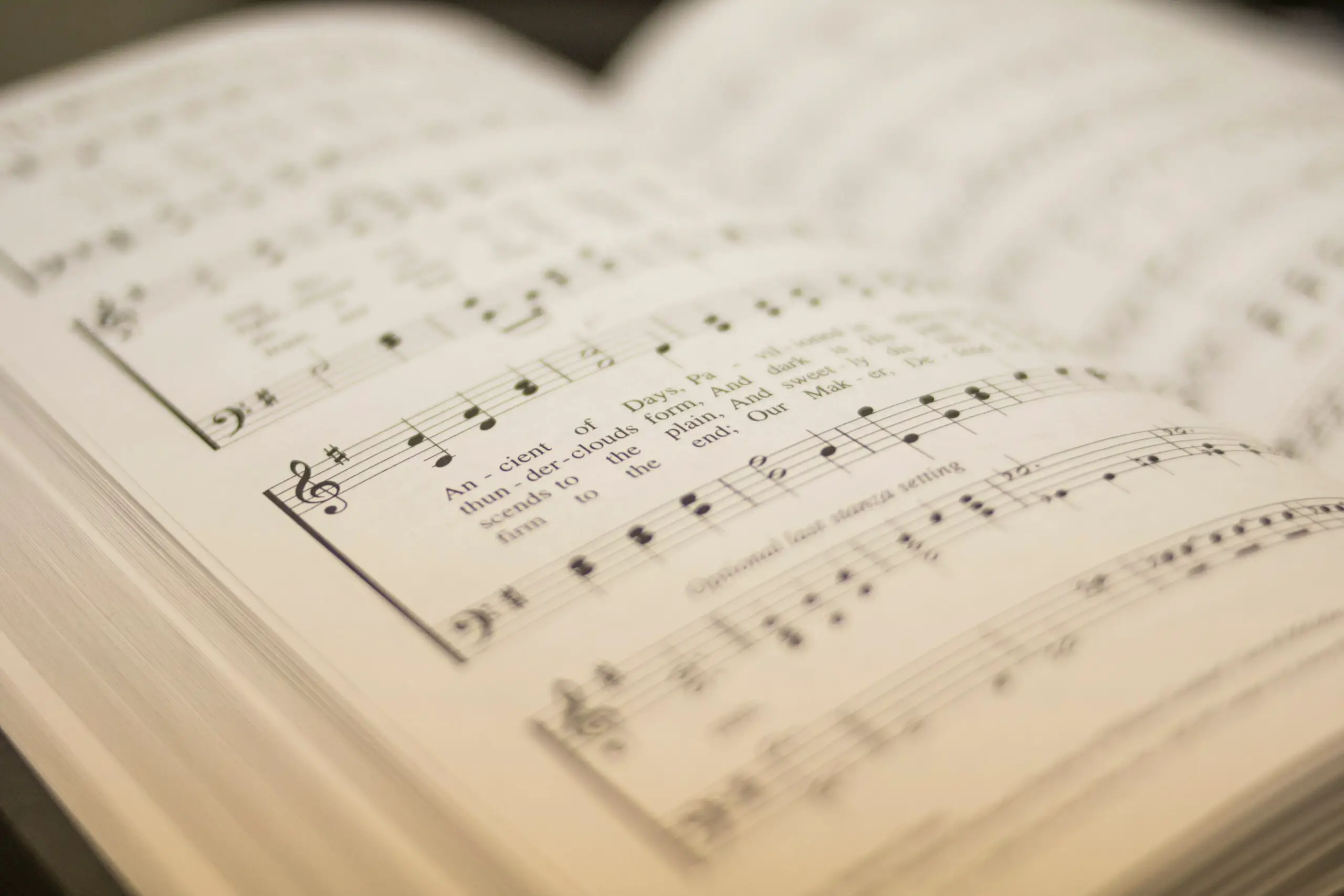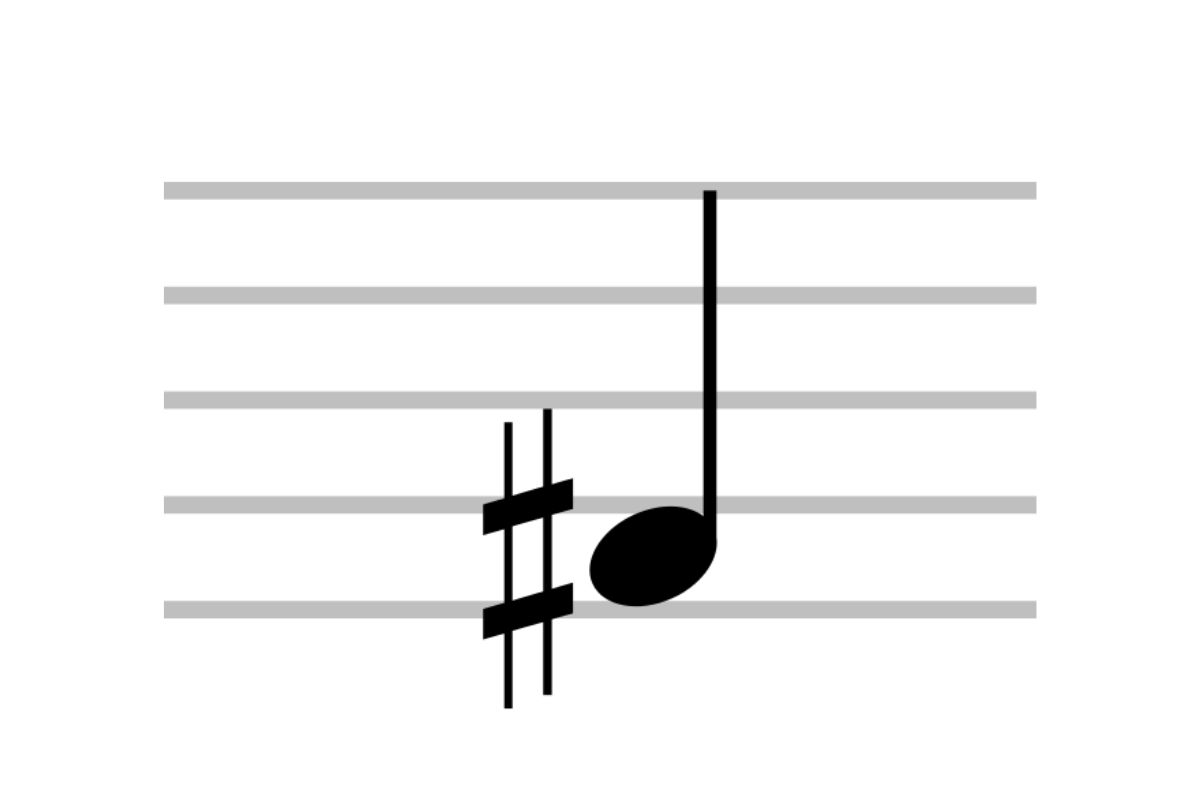“sharp” can be a real head-scratcher for beginners and seasoned musicians. It’s a concept that appears in sheet music, music theory, and even casual conversations about tunes and melodies. But what does it mean, and why is it important? This blog post will delve into musical sharpness, breaking down its definition, significance, and application in various musical contexts. Let’s strike a chord and explore what “sharp” truly means in music!
What does sharp mean? “Sharp” refers to a note played a semitone higher than its natural counterpart. For example, if you see a G-sharp on the sheet music, you’ll be playing a pitch half a tone higher than the regular G.
What are sharp and flat notes?
Sharp and flat notes alter Western music’s “natural” notes. They represent changes in pitch, either raising a note by a semitone (sharp) or lowering it by a semitone (flat). It’s like moving up or down one key on a piano. Sharp notes sound a semitone higher than the natural notes on a musical staff. The “#” symbol, located to the left of the notehead, designates them.

For example, if you see a G#, you play a G note a half step higher. Conversely, flat notes sound a semitone lower than natural notes. The”♭”symbol represents them. For instance, an E♭ indicates playing E a half step lower than its natural pitch.
AKAI Professional MPK Mini MK3

AKAI Professional MPK Mini MK3
When and why do musicians use sharps or flats?
The use of sharps or flats depends on the key signature of a musical piece. In Western music, certain keys have a group of sharps or flats associated with them. For example, the key of E major has four sharps (F#, C#, G#, and D#). The sharp or flat notes within a key help create the desired tonality and facilitate smooth transitions between chords and notes.
In sheet music, sharp notes are represented by the “#” symbol, while the “♭”symbol indicates flat notes. These accidentals tell the musician to change the pitch of the original note. For example, a sharp symbol on a C note would mean playing C# instead.
Can notes be double-sharp?
Yes, notes can be double-sharp. A double-sharp is a musical notation symbol that raises the pitch of a note by two half steps, or semitones. It is represented by the symbol “𝄪, “which looks like two sharp symbols (♯) combined. For example, if you have an F note and apply a double-sharp to it, the resulting note would be F𝄪 (F double-sharp), played at the same pitch as a G on a keyboard.
It’s important to note that double sharps and double flats are less commonly used than sharps and flats.
Similarly, a note can also be double-flat. A double-flat lowers the pitch of a note by two half steps or semitones. It is represented by the symbol “𝄫, “which looks like two flat symbols (♭) combined. It’s important to note that double sharps and double flats are less commonly used than sharps and flats. They frequently appear in music when working with key signatures or chords that call for raising or lowering a particular note by two half steps.
| Dos | Don’ts |
|---|---|
| Embrace the use of sharp and flat notes in your compositions | Don’t forget to consider the key signature and tonal context |
| Experiment with different tonalities for creative expression | Stay confined to natural notes only |
| Use accidentals to smoothly transition between chords | Overuse sharp or flat notes without musical purpose |
| Seek inspiration from the works of composers who utilize sharps and flats | Ignore the richness and depth these altered notes can bring to your music |
Are sharps and flats the same in every key?
While the basic concept of sharp and flat notes remains consistent across different keys, the specific sharp and flat notes will vary depending on the key signature. In each key, specific notes are naturally sharp or flat, and those are incorporated into compositions accordingly.
For example, the F note is naturally sharp in the key of G major, so it would not require a separate sharp symbol when written in sheet music. However, in the key of C major, which has no sharps or flats in its key signature, any altered pitches would be indicated with a sharp or flat symbol.

What’s the difference between a sharp note and a raised note?
The terms “sharp note” and “raised note” are often used interchangeably, but there is a subtle distinction between the two. A sharp note is a note that is naturally higher in pitch than the “natural” note. On the other hand, a raised note refers to a note that is artificially raised by a semitone. While they may sound the same, the distinction lies in the context of the key in which the notes are played.
The use of sharps and flats in music theory specifically refers to the naturally altered notes, while raising or lowering a note can be done in any key. To put it all together, understanding the concept of sharp and flat notes is essential for musicians and music enthusiasts alike. These altered pitches add depth, complexity, and richness to musical compositions across various genres.
Below is a table highlighting the differences between a sharp note and a raised note:
| Aspect | Sharp Note | Raised Note |
|---|---|---|
| Definition | It can also be notated using the “+” symbol followed by the note name (e.g., C+). However, the “+” symbol is less common. | The same as a sharp note, indicating an increase of one semitone in pitch. |
| Notation | Notated using the “#” symbol followed by the note name (e.g., C#). | They are used to temporarily increase the pitch of a note, often for chromatic or melodic purposes, without necessarily altering the key signature. |
| Context | Commonly used within the context of a specific key signature. | They are used for chromaticism, modal interchange, or creating tension and release in melodies and harmonies. |
| Tonal Function | It can introduce altered or borrowed chords, enriching the harmonic palette without necessarily changing the overall tonal center. | They are utilized to create unique melodic lines, harmonies, and emotional nuances in compositions across various musical genres. |
| Harmonic Implications | It can be part of the diatonic scale or used for chromatic inflections. | It can lead to modulation if used to change key centers. |
| Notable Use | Used in standard key signatures and scales (e.g., the C# major scale). | They are often employed without changing the overall key, providing temporary color and intrigue within a piece. |
| Key Changes | Can lead to modulation if used to change key centers. | Often employed without changing the overall key, providing temporary color and intrigue within a piece. |
It’s important to note that while the terms “sharp note” and “raised note” are sometimes used interchangeably, their specific meanings can vary slightly based on context and musical theory.
If you want more information and great tips about sharp notes, check out the video below.
Frequently Asked Questions (FAQ)
Below are some of the most commonly asked questions about sharp in music.
Can sharp and flat notes be used interchangeably?
While sharp and flat notes can have the same pitch acoustically, in music theory, they have distinct meanings and are used based on the key signature. The use of sharp or flat notes depends on the desired tonality and the context of the musical composition.
Are sharp and flat notes only applicable to Western music?
No, the concept of sharp and flat notes extends beyond Western music. Music traditions and cultures worldwide have systems for altering pitches, similar to sharp and flat notes.
Can altered notes be notated differently in different music notation systems?
Different music notation systems may vary in how they represent altered notes. Some systems use different symbols altogether, while others may use additional markings above or below the notehead to indicate sharp or flat pitches.
Conclusion
And that’s a wrap! We’ve journeyed through the captivating realm of sharp and flat notes in music, unraveling their significance and exploring their role in creating beautiful harmonies. Hopefully, this adventure has deepened your understanding of the music theory behind these alterations and inspired you to embrace the boundless possibilities they offer.
Did I cover everything you wanted to know? Let me know in the comments section below (I read and reply to every comment). If you found this article helpful, share it with a friend, and check out my full blog for more tips and tricks on music theory. Thanks for reading, and keep harmonizing your journey in the music world!
Key Takeaways
This article covered the concept of sharp and flat notes in music, emphasizing their significance and practical applications in music production, home studio recording, and audio engineering. Here are some key takeaways:
- Sharp notes raise the pitch of a note by a semitone, while flat notes lower it.
- Both sharps and flats are alterations to the natural notes and are dictated by the key signature.
- Sharps and flats enhance expressiveness, melodic variations, harmonic complexity, and experimental sound design in music production.
- Understanding sharp and flat notes provides musicians a broader tonal palette, facilitating seamless transitions and adding depth to compositions.















